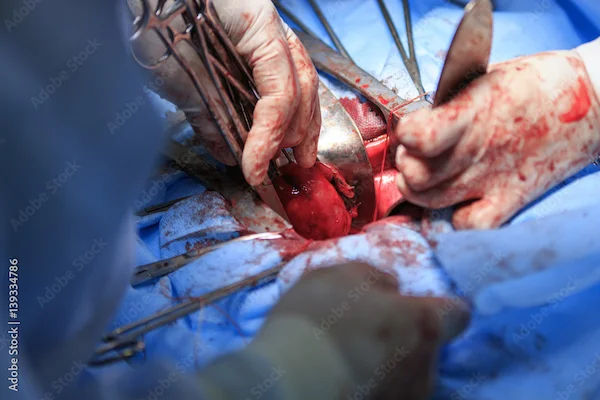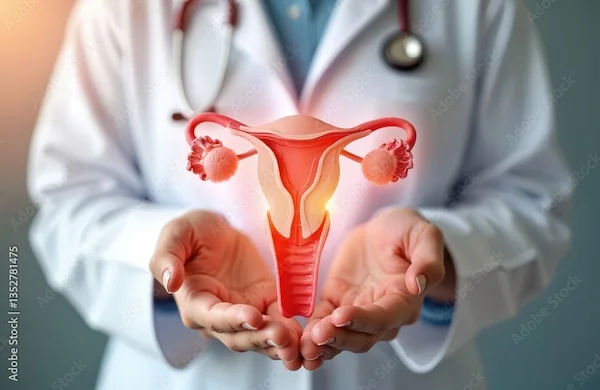How Do They Remove Uterus During Laparoscopic Hysterectomy?
Discover how surgeons remove the uterus during laparoscopic hysterectomy. Learn about the step-by-step procedure, benefits, and recovery process of this minimally invasive surgery.

Written by Dr.Sonia Bhatt
Last updated on 3rd Jul, 2025

Introduction
If you or someone you know has been advised to undergo a laparoscopic hysterectomy, you might have questions about how the procedure works. A hysterectomy is the surgical removal of the uterus, and the laparoscopic approach is a minimally invasive technique that offers several benefits, including faster recovery and smaller scars. In this article, we’ll explain in simple terms how the uterus is removed during a laparoscopic hysterectomy, what to expect before, during, and after the surgery, and how to take care of yourself post-procedure.
What is a Laparoscopic Hysterectomy?
A laparoscopic hysterectomy is a surgical procedure where the uterus is removed using small incisions (usually 0.5 to 1 cm) in the abdomen. A thin, lighted tube with a camera (laparoscope) is inserted through one of these incisions, allowing the surgeon to see inside the abdomen and perform the surgery with precision.
Types of Laparoscopic Hysterectomy
The types of laparoscopic hysterectomy are:
1. Total Laparoscopic Hysterectomy (TLH): The entire uterus (including the cervix) is removed.
2. Laparoscopic Supracervical Hysterectomy (LSH): Only the upper part of the uterus is removed, leaving the cervix intact.
3. Laparoscopic-Assisted Vaginal Hysterectomy (LAVH): Part of the surgery is done laparoscopically, and the uterus is removed through the vagina.
How is the Uterus Removed During Laparoscopic Hysterectomy?
Step-by-step procedure of uterus removal are as follows:
1. Preparation
You will be given general anaesthesia, meaning you will be asleep during the procedure.
A catheter may be placed in your bladder to drain urine.
The surgical team will clean and sterilise the abdominal area.
2. Making Small Incisions
The surgeon makes 3-4 tiny cuts in the abdomen (usually near the belly button and lower abdomen).
3. Inserting the Laparoscope and Instruments
A laparoscope (a thin tube with a camera) is inserted through one incision to provide a clear view of the pelvic organs.
Special surgical instruments are inserted through the other incisions to perform the surgery.
4. Separating the Uterus
The surgeon carefully cuts and detaches the uterus from surrounding tissues, including:
Fallopian tubes and ovaries (if they are also being removed).
Blood vessels supplying the uterus (these are sealed to prevent bleeding).
Ligaments holding the uterus in place.
5. Removing the Uterus
The uterus is cut into smaller pieces (morcellation) if needed. It is then removed either:
Through the vagina (in LAVH).
Through one of the small abdominal incisions (in TLH or LSH).
6. Closing the Incisions
The small cuts are stitched up, and bandages are applied.
The entire procedure typically takes 1-3 hours, depending on the complexity.
Consult Top Specialists for Personalised Tips
Recovery After Laparoscopic Hysterectomy
Steps for recovery after the surgery are as follows:
What to Expect After Surgery?
Hospital Stay: Most women go home the same day or after 1-2 days.
Pain & Discomfort: Mild abdominal pain, bloating, and shoulder pain (from gas used during surgery) are common but manageable with prescribed painkillers.
Vaginal Bleeding: Light spotting may occur for a few weeks.
Activity Restrictions: Avoid heavy lifting, strenuous exercise, or sexual activity for 4-6 weeks.
Tips for Faster Recovery
Rest but stay mobile: Short walks help prevent blood clots.
Stay hydrated & eat fibre-rich foods: Prevents constipation.
Follow wound care instructions: Keep incisions clean and dry.
Avoid driving for 1-2 weeks: Wait until you’re off strong pain medications.
When to Call the Doctor?
Seek medical help if you experience:
Heavy bleeding (soaking a pad in an hour).
Fever (over 101°F).
Severe pain not relieved by medication.
Foul-smelling vaginal discharge.
Why Choose Laparoscopic Hysterectomy?
Compared to traditional open surgery, laparoscopic hysterectomy offers:
Smaller scars (only tiny incisions).
Less pain & blood loss.
Shorter hospital stay.
Faster recovery (back to normal activities in 2-4 weeks).
Conclusion
A laparoscopic hysterectomy is a safe and effective way to address conditions like fibroids, endometriosis, or abnormal bleeding. With proper care, most women recover well and resume their daily lives with minimal discomfort.
Consult Top Obstetrics and Gynaecology Surgeon
Consult Top Specialists for Personalised Tips

Dr. Veena H
Obstetrician and Gynaecologist
16 Years • MBBS DGO
Bangalore
Apollo 24|7 Clinic - Karnataka, Bangalore

Dr. Priyanka Surisetty
Obstetrician and Gynaecologist
8 Years • MBBS, DGO
Visakhapatnam
Apollo 24|7 Clinic - Andhra Pradesh, Visakhapatnam

Dr. Shailaja L
Obstetrician and Gynaecologist
16 Years • MBBS, MS
Bangalore
Apollo 24|7 Clinic - Karnataka, Bangalore

Dr. Neetu Singh
Obstetrician and Gynaecologist
19 Years • MBBS , MD (Obstetrics & Gynaecology)
Ghaziabad
Mother And Kidz Clinic, Ghaziabad

Dr. Abhilasha Kumar
Obstetrician and Gynaecologist
30 Years • MBBS, MS, DCG(Obstetrician and cosmetic gynaecologist)
Kolkata
A4 Clinic, Kolkata
Consult Top Obstetrics and Gynaecology Surgeon

Dr. Veena H
Obstetrician and Gynaecologist
16 Years • MBBS DGO
Bangalore
Apollo 24|7 Clinic - Karnataka, Bangalore

Dr. Priyanka Surisetty
Obstetrician and Gynaecologist
8 Years • MBBS, DGO
Visakhapatnam
Apollo 24|7 Clinic - Andhra Pradesh, Visakhapatnam

Dr. Shailaja L
Obstetrician and Gynaecologist
16 Years • MBBS, MS
Bangalore
Apollo 24|7 Clinic - Karnataka, Bangalore

Dr. Neetu Singh
Obstetrician and Gynaecologist
19 Years • MBBS , MD (Obstetrics & Gynaecology)
Ghaziabad
Mother And Kidz Clinic, Ghaziabad

Dr. Abhilasha Kumar
Obstetrician and Gynaecologist
30 Years • MBBS, MS, DCG(Obstetrician and cosmetic gynaecologist)
Kolkata
A4 Clinic, Kolkata



.webp)
